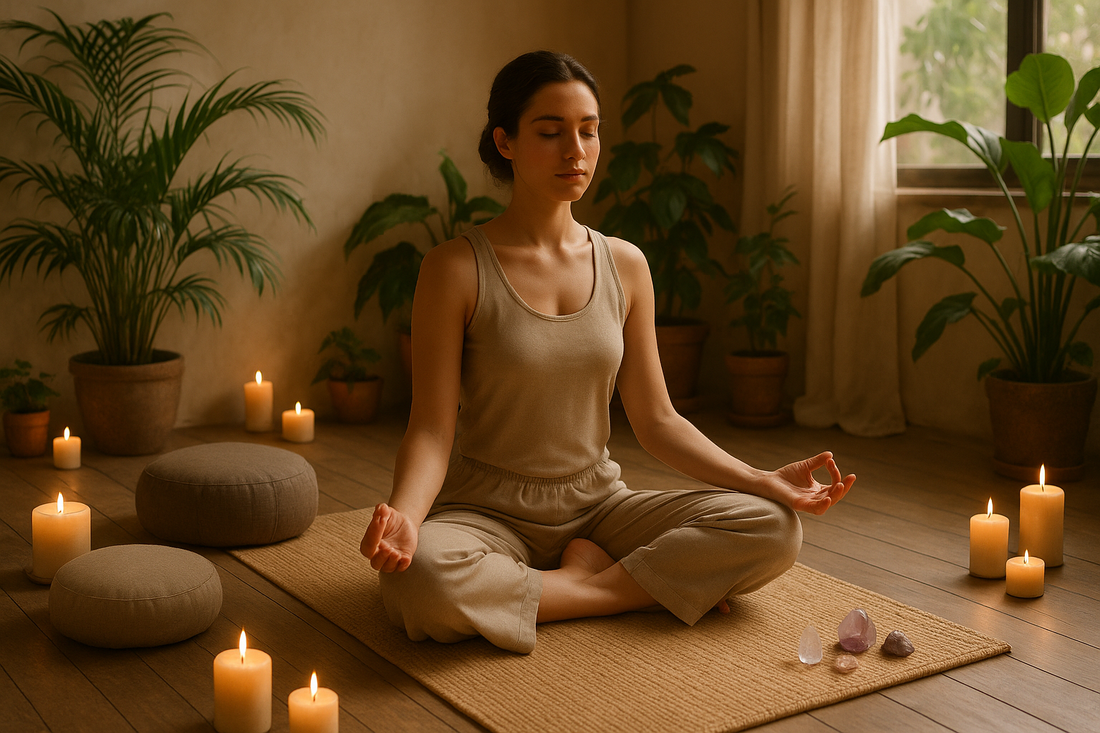
The Eight Limbs of Yoga: A Beginner’s Guide
Share
At Alma Sanctuary, we believe yoga is so much more than movement—it is a way of living with soul. Long before yoga was a trending class at boutique studios or a luxury retreat offering, it was (and still is) an ancient philosophy designed to guide us into harmony with ourselves, others, and the greater universe.
At the heart of this philosophy are The Eight Limbs of Yoga, outlined over 2,000 years ago in The Yoga Sutras of Patanjali. Think of them as a map—not a rigid checklist, but a compass for living with presence, mindfulness, and balance.
Let’s explore each limb, and how these timeless teachings can be woven into our modern, beautifully complex lives.
1. Yamas – Ethical Foundations
The yamas are our values in action, guiding how we show up in the world.
-
Ahimsa (non-harming): Practicing compassion—toward yourself in the mirror, your partner in conversation, and even the planet through sustainable choices.
-
Satya (truthfulness): Speaking honestly yet kindly, whether in business meetings or heart-to-heart talks.
-
Asteya (non-stealing): Respecting time, energy, and resources—not just possessions.
-
Brahmacharya (balance of energy): Mindful use of energy—choosing presence over burnout.
-
Aparigraha (non-grasping): Letting go of the need to control outcomes or cling to “more.”
✨ Modern practice: Saying no gracefully, choosing slow luxury over fast consumption, and cultivating presence in relationships.
2. Niyamas – Inner Disciplines
Where the yamas are about how we interact with the world, the niyamas are how we tend to our inner life.
-
Saucha (purity): Curating your home, your body, and your mind with clarity.
-
Santosha (contentment): Choosing gratitude over comparison.
-
Tapas (discipline): The fire of commitment—rolling out your mat even when it’s hard.
-
Svadhyaya (self-study): Journaling, therapy, meditation—tools for knowing yourself deeply.
-
Ishvarapranidhana (surrender): Releasing control and trusting a greater flow.
✨ Modern practice: Morning rituals, mindful skincare routines, or daily gratitude journaling.
3. Asana – The Physical Postures
This is what most of us think of as “yoga.” The poses were originally designed to prepare the body to sit in meditation with steadiness and ease.
✨ Modern practice: A vinyasa class, a 10-minute stretch between Zoom calls, or simply learning to listen when your body whispers “rest.”
4. Pranayama – Breathwork
Prana means “life force.” Breath is the bridge between body and mind. By learning to guide our breath, we learn to guide our energy.
✨ Modern practice: Box breathing before a presentation, alternate nostril breathing to reset after an argument, or three deep belly breaths while waiting in traffic.
5. Pratyahara – Withdrawal of the Senses
In a world of constant notifications, pratyahara is radical. It means turning inward, stepping away from external noise to reconnect with your inner landscape.
✨ Modern practice: Putting your phone on airplane mode, savoring a meal in silence, or taking a digital detox weekend.
6. Dharana – Concentration
Dharana is focused attention, the practice of bringing your awareness to a single point—like training the mind to stay, rather than wander.
✨ Modern practice: Journaling with intention, focusing on your breath during meditation, or immersing fully in a creative project without multitasking.
7. Dhyana – Meditation
Dhyana is meditation in its truest form—continuous awareness. It’s not about “emptying the mind,” but resting in the spaciousness beyond thought.
✨ Modern practice: A daily meditation practice, walking mindfully in nature, or simply observing your breath over your morning coffee.
8. Samadhi – Union
The final limb is the fruit of the journey—union with the divine, the self, and all that is. It’s a state of blissful presence where the illusion of separateness dissolves.
✨ Modern practice: Those fleeting moments of awe—a sunset, your child’s laughter, or a deep sense of connection in community.
Living the Eight Limbs Today
The Eight Limbs are not rules but invitations. They remind us that yoga isn’t just what happens on the mat—it’s how we live, love, and serve.
At Alma Sanctuary, we see them as the foundation of soulful living: ethical choices, mindful rituals, embodied movement, conscious breath, sacred pauses, focused awareness, meditation, and unity.
Yoga is not about perfection. It’s about remembering—again and again—that every breath, every action, and every relationship can become a practice in living with soul.
At Alma Sanctuary, we’ll be exploring each of these limbs in depth through our Soulful Library offerings and guided workshops. Which limb feels most alive for you right now? Share your reflections with our community—we grow together.

